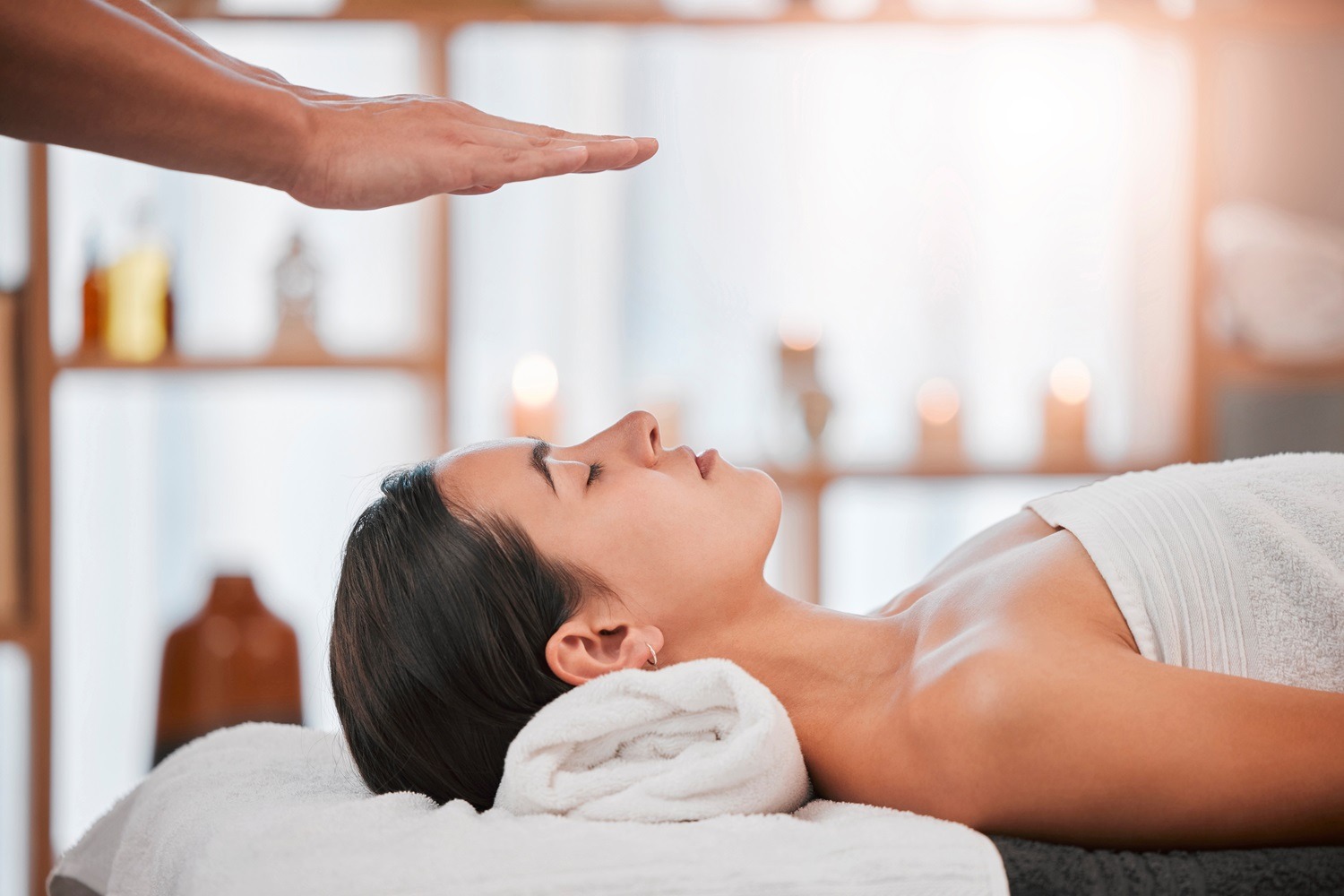It’s natural and understandable to want a path to health that encompasses the whole body. The body, the mind, and the lifestyle. That want leads many people to search for a holistic center near them.
The cool thing is that there’s a lot of research, namely from the National Center for Complementary and Integrative Health (NCCIH), the Cureus Jorunal of Medical Science, and Frontiers in Medicine that justifies your choice. The NCCIH, specifically, refers to this as whole person health, a model that focuses on the interplay of physical, emotional, and social well-being.
If you’re curious about how this philosophy works in everyday practice, our guide to holistic medicine explains the principles and common treatments in detail.
Cureus research demonstrates a strong connection between patients and practitioners in holistic care. A deeper connection like that allows more open dialogue and collaborative goal setting. Without keeping an open mind, you’re siloing the treatment strategies available to you. You might only think about physical symptoms, when you could be incorporating emotional and environmental factors as well.
Meanwhile, the Frontiers research shows that holistic care complements traditional medicine. When they’re mixed together, they tend to lead to more satisfied patients and better health outcomes.
If you’ve been unsure whether it’s time to explore holistic care, certain patterns in your health may point toward it. Below are five key signs to watch for, along with examples of how a holistic center can address each one using safe, evidence-based methods.
1. Chronic Pain Persists Despite Conventional Treatment
You’ll get stressed and cranky when you’re in pain all the time. It affects mobility, disrupts sleep, and can even lead to emotional strain. Standard medical care might not be enough, and that creates room for holistic care to step in. There’s a range of complementary options designed to approach pain from several angles.
NCCIH highlights the strong research base supporting practices like acupuncture, therapeutic massage, yoga, and tai chi for managing chronic pain. Therapies like these can reduce inflammation, and improve circulation. Those are usually contributors to the root causes of your pain.
You can also explore lifestyle adjustments, such as improving your sleeping position, to reduce pain triggers. See our tips on eliminating pain from incorrect sleeping for practical ideas you can try at home.
In Frontiers in Medicine, researchers found that combining these with traditional pain management can reduce the need for pain medications. Many holistic centers combine physical therapies with nutritional counseling and relaxation training to create a balanced plan.
Common pain management services include:
- Acupuncture sessions that stimulate nerve pathways to promote natural pain relief and improve blood flow to affected areas.
- Massage therapy focused on reducing muscle tension to enhance range of motion and lessen daily discomfort.
- Yoga or tai chi classes to build core strength and joint stability while encouraging mindful movement habits.
- Personalized nutrition plans that emphasize anti-inflammatory foods to reduce systemic inflammation.
- Mind-body techniques such as guided meditation or visualization to reframe pain perception and reduce stress triggers.
The Cureus study notes the importance of clear communication between your holistic practitioner and your medical provider. Without it, the therapies work in isolation instead of together.
If chronic pain continues to limit your activities despite ongoing treatment, find a holistic center near you. They can help you explore noninvasive, complementary options that address both the source and the effects of pain.
2. Ongoing Stress, Anxiety, or Sleep Disruption
Long-term stress and anxiety can be just as damaging as physical illness. Over time, constant tension may raise blood pressure, weaken immunity, and lead to a vicious cycle of poor sleep. Sleep is important, and you’ll feel mentally/physically drained without it.
NCCIH identifies mind-body practices as proven ways to calm the nervous system and lower stress hormones. Many holistic centers offer programs specifically designed to address the stress–sleep connection. You’ll be able to better relax before bed.
According to Frontiers in Medicine, activities like restorative yoga or tai chi provide physical relaxation and social engagement, which can enhance emotional well-being.
Services that target stress and sleep may include:
- Mindfulness meditation classes that train the mind to focus on the present moment and reduce cycles of anxious thought.
- Breathing exercises that slow heart rate and prepare the body for deeper, more restorative sleep.
- Herbal remedies selected for their calming properties, always reviewed for safety alongside current medications.
- Restorative yoga sessions with gentle poses that release muscular tension and promote relaxation before bedtime.
- Progressive muscle relaxation techniques that help release built-up stress throughout the body.
Remember, these tools won’t do much if they’re not combined with healthy bedtime routines. Maintain a regular sleep schedule and create a dark, quiet sleep environment.
If stress or sleep problems are becoming a regular struggle, holistic care offers natural, practical methods to calm the mind, relax the body, and improve rest quality.
3. You Want a Whole-Person Wellness Strategy
Traditional healthcare usually focuses on treating specific symptoms of specific conditions. A lot of people are looking for treatments that go deeper than that surface level. That requires taking physical, emotional, and lifestyle factors into account. This is where a whole-person strategy becomes essential.
NCCIH defines whole-person health as integrating medical treatment with lifestyle and environmental changes. It emphasizes prevention as much as treatment, with the goal of helping you thrive in the long term.
The Cureus study highlights that whole-person care often involves setting measurable goals, tracking progress, and making adjustments as needed. Frontiers in Medicine adds that patients often report higher satisfaction and better engagement when their care feels coordinated and comprehensive.
A whole-person wellness plan from a holistic center might include:
- Preventive screenings paired with complementary therapies to address potential issues early from many perspectives.
- Nutrition planning based on personal health metrics to boost energy, immunity, and mood stability.
- Tailored fitness routines that fit your physical abilities and long-term wellness goals.
- Ongoing stress management programs to maintain mental resilience and emotional balance.
- Guidance on reducing environmental exposures that may affect health over time.
Without these elements, a holistic care plan won’t adapt to your needs as well as it could. For more on building a balanced approach to health, check out What Is Holistic Medicine? Answering Your Top 5 Natural Healing Questions.
4. You Need Natural Support Alongside Medical Treatments
Invasive treatments like surgery, chemo, and harsh medications aren’t fun. They can take a serious physical/emotional toll. Holistic care can help you deal with that toll in safe, natural ways.
NCCIH notes that gentle yoga, relaxation techniques, and therapeutic massage can help reduce discomfort, promote mobility, and support recovery.
The Cureus study underscores the importance of close coordination between holistic providers and medical teams to keep everything safe and compatible. In Frontiers in Medicine, integrative oncology programs are highlighted for their success in using nutrition counseling, stress reduction, and light exercise to improve quality of life during treatment.
Supportive care options may include:
- Restorative yoga designed to preserve mobility without straining the body during recovery.
- Massage therapy to ease treatment-related tension and support healthy circulation.
- Nutrition guidance that addresses healing needs and supports immune function.
- Guided relaxation or visualization exercises to help manage anxiety related to ongoing treatment.
- Breathing techniques that improve oxygen flow and reduce fatigue.
If you’re undergoing medical treatment and want extra support for comfort, resilience, and emotional stability, call a holistic center. They can complement your care safely and effectively.
5. You’re Focused on Preventive Health and Long-Term Wellness
The name of the game in preventive health is making consistent choice now. You’re making those choices to reduce the risk of illness down the line. Holistic centers weave that prevention into your daily life, coming up with a comprehensive, coordinated plan.
NCCIH organizes complementary approaches into areas like diet, physical activity, and mind-body practices, making it easier to structure a prevention-focused lifestyle.
The Cureus paper notes that preventive strategies may shift with seasonal changes, life events, or new health goals. Frontiers in Medicine confirms that multi-faceted prevention can significantly lower the risk of chronic conditions.
Preventive services may include:
- Nutrition counseling adjusted for the seasons to ensure you’re meeting nutrient needs year-round.
- Exercise plans tailored to age, ability, and goals to maintain strength, balance, and cardiovascular health.
- Mindfulness and relaxation training to strengthen mental resilience and emotional balance.
- Education on minimizing toxin exposure at home for cleaner air, water, and living spaces.
- Regular wellness assessments to track progress and make timely adjustments.
If you’re committed to long-term wellness, a holistic center can help you design and maintain a preventive plan that evolves with your needs and priorities. If you’re looking for targeted nutrient support, our Ultimate Guide to Vitamins and Supplements for Seniors offers insights that apply to adults of all ages.
Integrating Holistic Care into Your Life
Holistic centers aim to create a balanced, sustainable approach to health that considers your entire life. Whether you need relief from chronic pain, help with stress and sleep, a comprehensive wellness strategy, supportive care during treatment, or preventive guidance, these centers offer tools to support your journey.
Choosing the right holistic center near you means finding one that listens closely, understands your health history, and tailors every recommendation to your needs. Many people discover that once they begin integrating natural approaches with their existing medical care, they feel more in control of their health and more motivated to maintain positive changes.
Preventive health and natural therapies also play a role in slowing the signs of aging. Learn how anti-aging medicine is evolving to support long-term vitality.
If these signs feel familiar, start by searching for a holistic center near me. Look for practitioners who are open to collaboration with your current providers, use evidence-based therapies, and emphasize ongoing communication.
Resources
Hoenders R, Ghelman R, Portella C, Simmons S, Locke A, Cramer H, Gallego-Perez D and Jong M (2024) A review of the WHO strategy on traditional, complementary, and integrative medicine from the perspective of academic consortia for integrative medicine and health. Front. Med. 11:1395698. doi: 10.3389/fmed.2024.1395698
https://www.nccih.nih.gov/health/complementary-alternative-or-integrative-health-whats-in-a-name
Mortada EM. Evidence-Based Complementary and Alternative Medicine in Current Medical Practice. Cureus. 2024;16(1):e52041. Published 2024 Jan 10. doi:10.7759/cureus.52041




